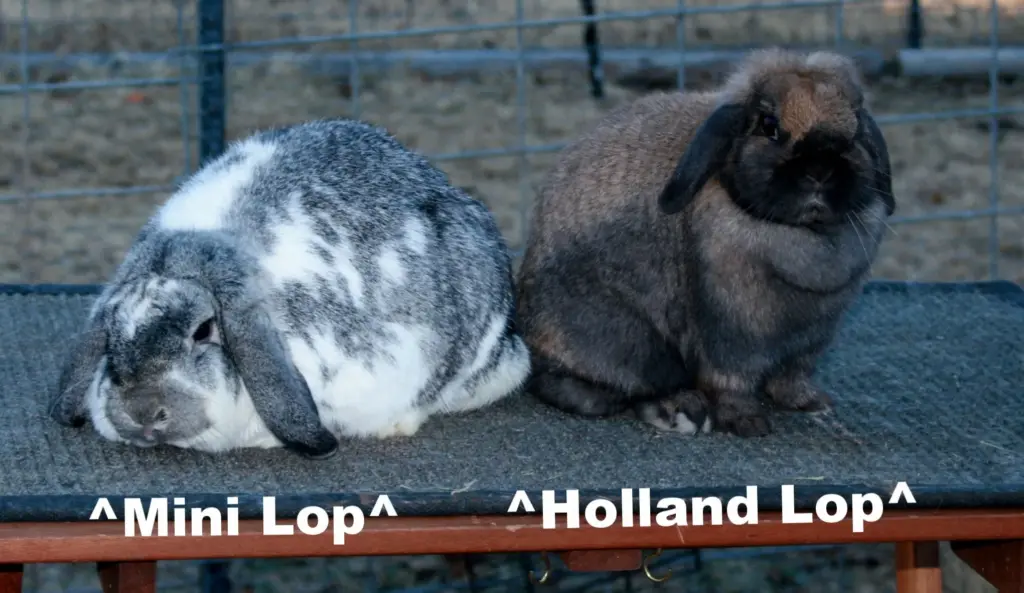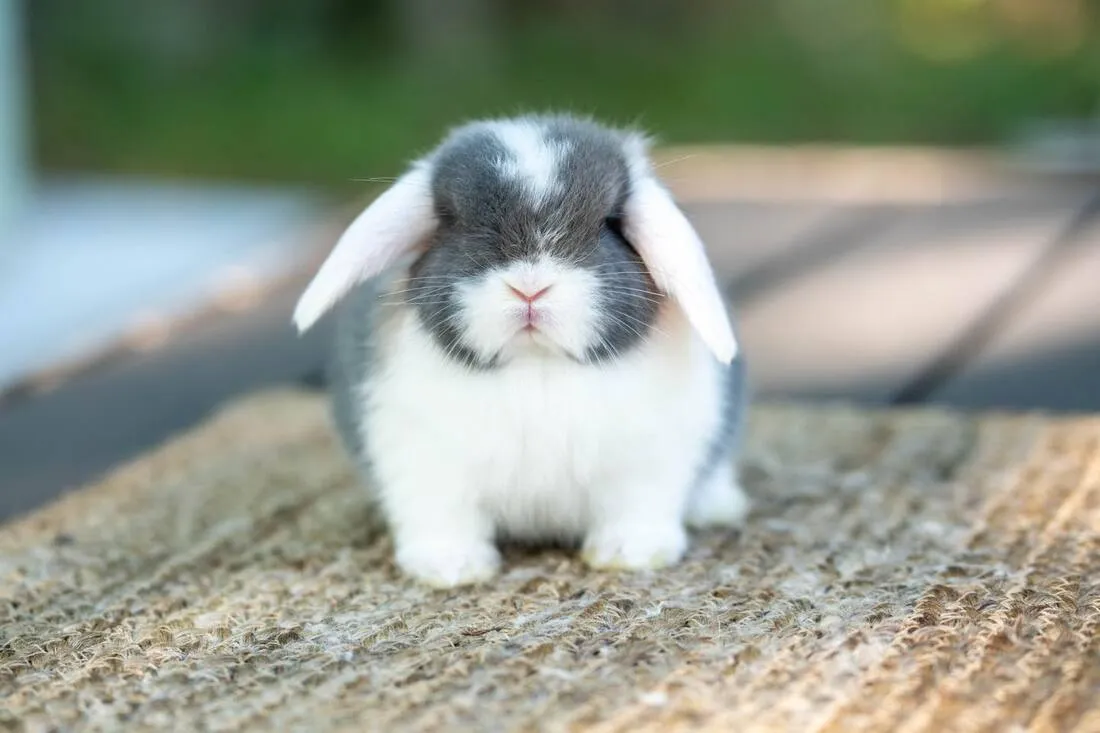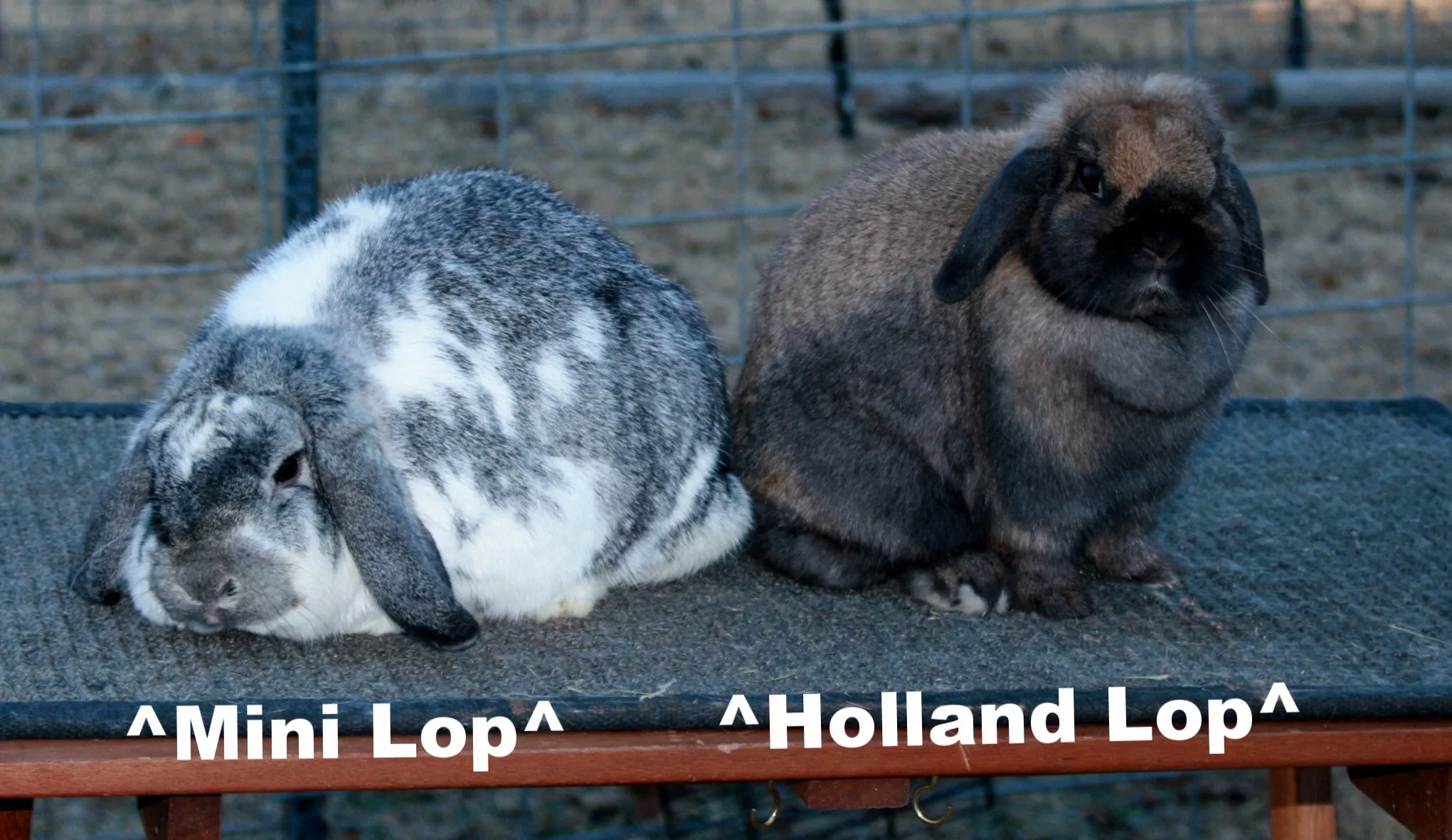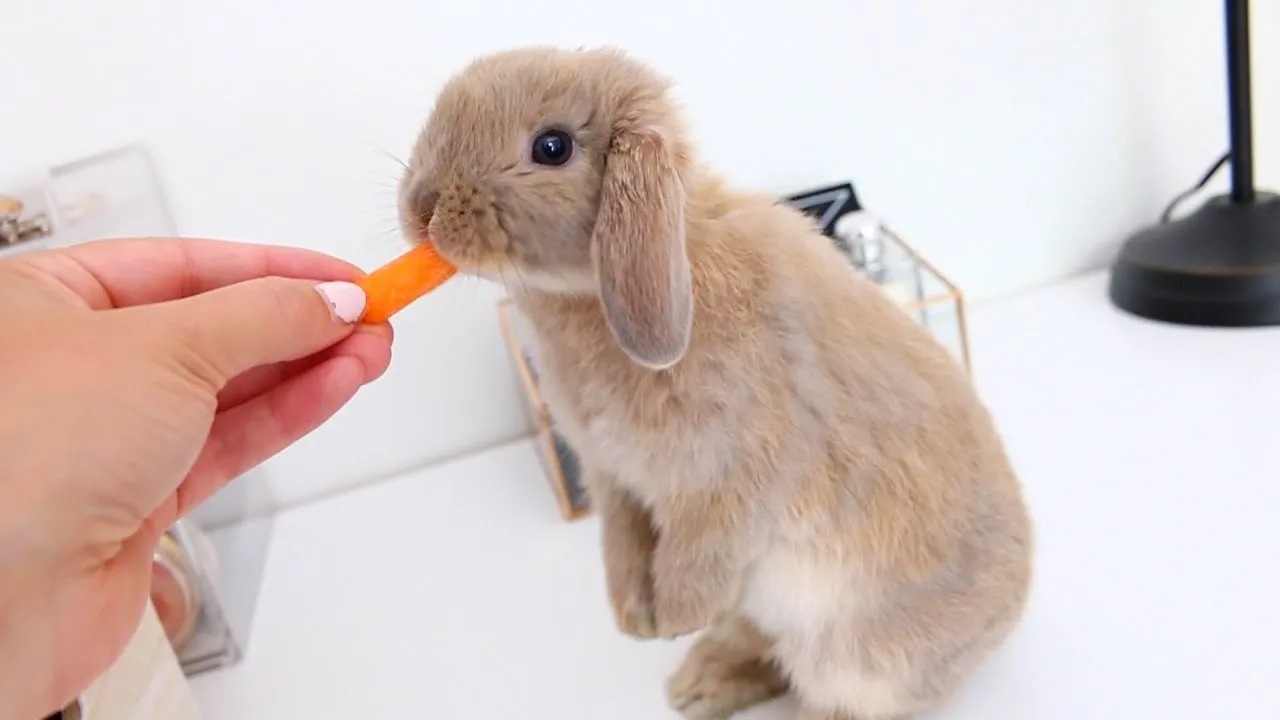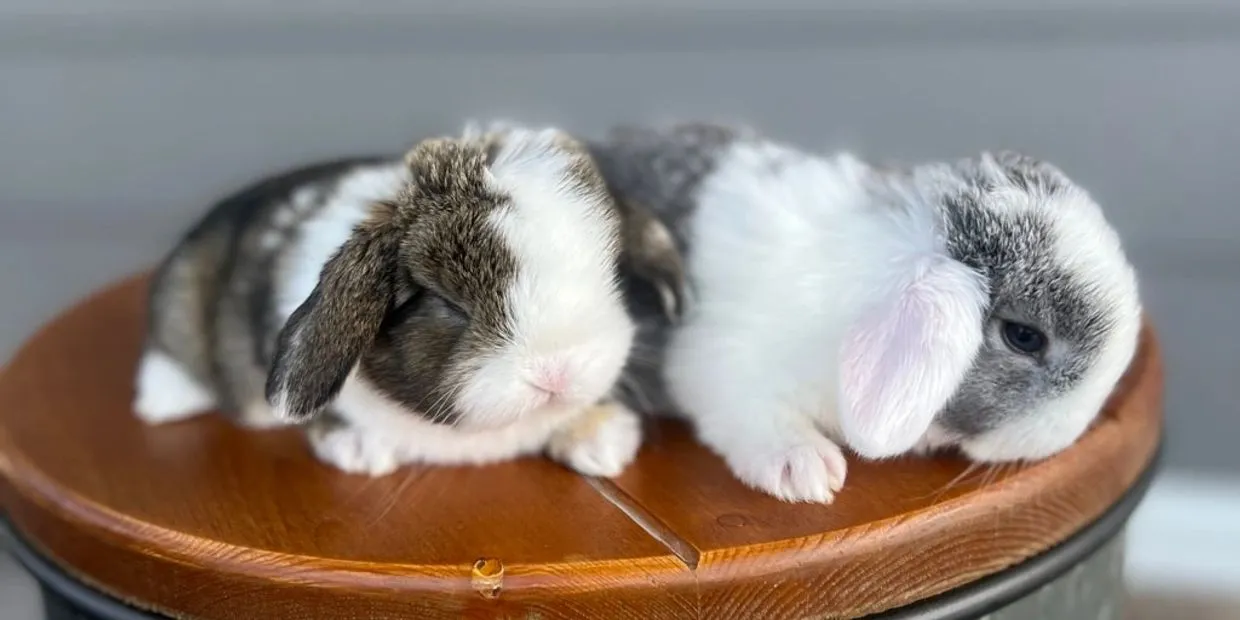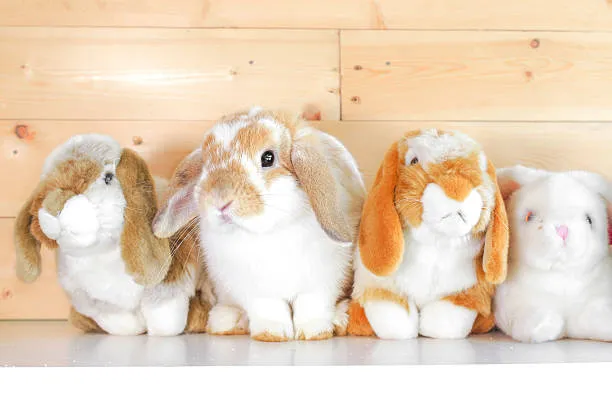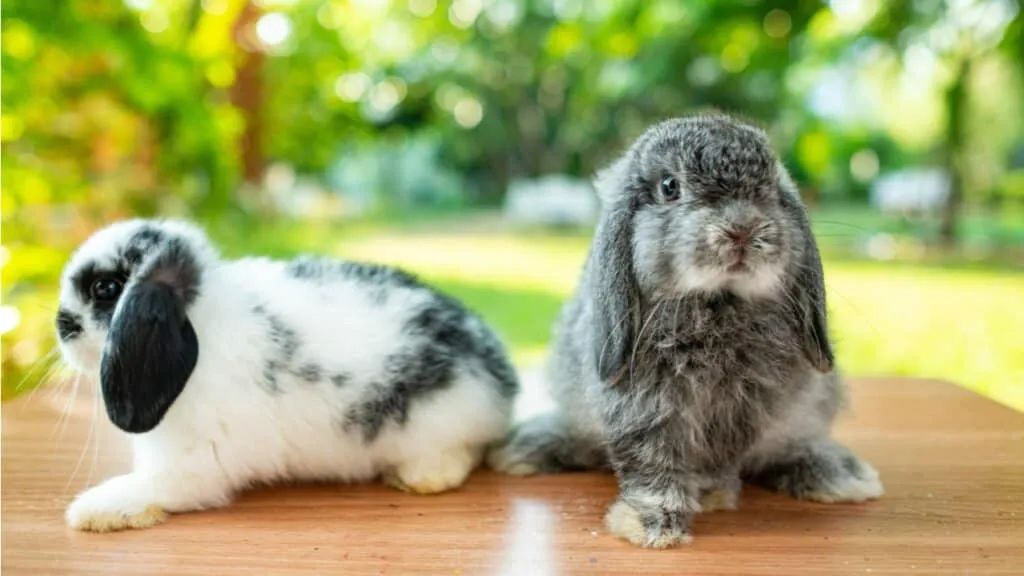Choosing between the Mini Lop vs Holland Lop ideal rabbit breed is an important decision for any rabbit owner, especially when the options are as adorable as the Mini Lop and the Holland Lop.
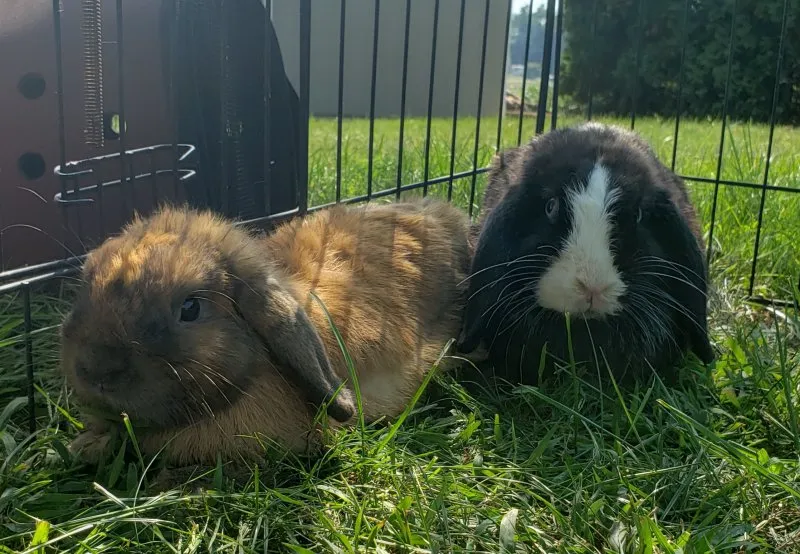
They share a common heritage in their love of their lopped ears, outgoing personality, and compact size, so much in demand by household rabbit owners.
But while alike in appearance at first glance, the Holland Lop and the Mini Lop vary in a myriad of ways, such as size, temperament, coat maintenance, and overall care.
Knowing these variations helps make an educated choice as to which rabbit will be compatible with your life and lifestyle.
This detailed article compares both the Holland Lop and the Mini Lop in all their significant aspects, delivering brief information on their origin, looks, temperament, and coat maintenance.
If you are a first-time rabbit owner or you wish to add more rabbits to your family, this article will guide you through choosing the ideal breed for you.
Mini Lop vs Holland Lop Background
The Holland Lop was developed in the 1950s in the Netherlands by breeding a Netherland Dwarf with a French Lop and, subsequently, refining it with the English Lop.
The aim was to produce a lopped-eared miniature rabbit with a good temperament. The Holland Lop gained immense popularity worldwide instantly and was recognised by the American Rabbit Breeders Association (ARBA) in 1979.
On the other hand, the Mini Lop originated in Germany during the 1970s and was also called the Klein Widder. It was exported to America during the latter part of the 1970s and was accepted by ARBA in 1980.
The Mini Lop was developed by crossbreeding larger lopped breeds like the French Lop and smaller rabbits like the Chinchilla rabbit. The medium, easy-going rabbit thus developed has a relaxed temperament.
Physical Differences and Breed Standards
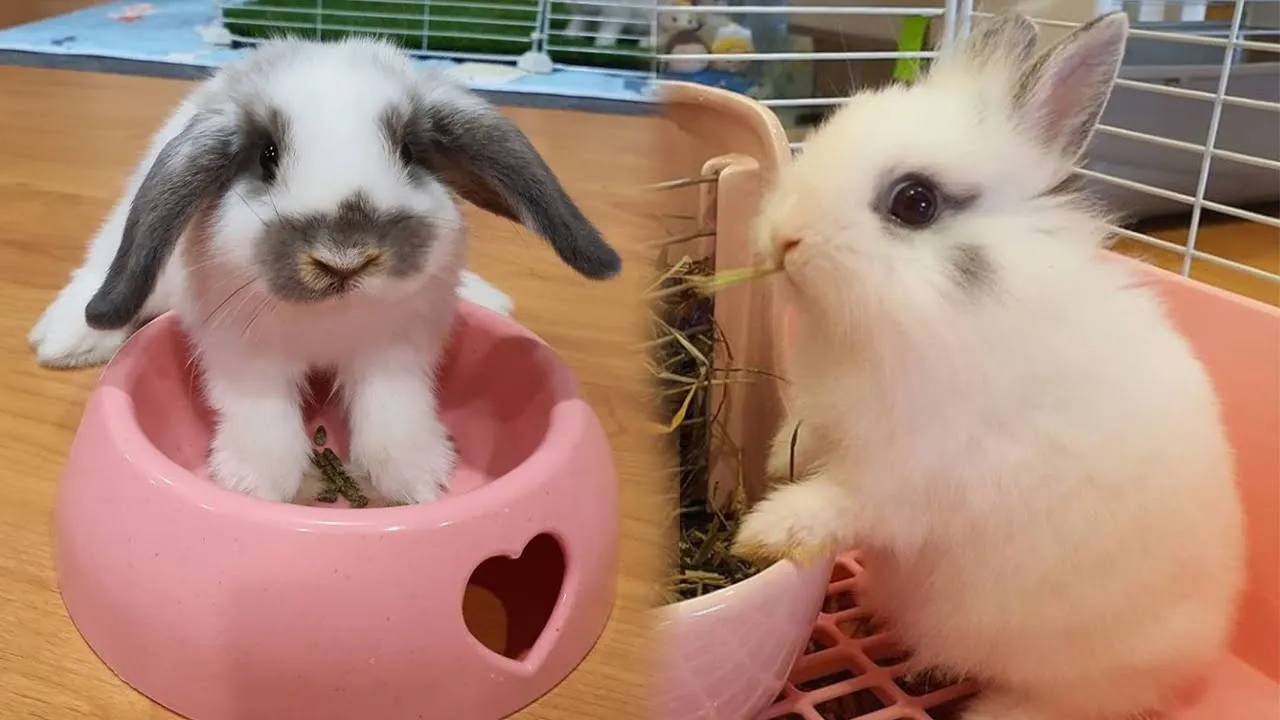
One of the most pronounced and one of the most apparent differences between the Holland Lop and the Mini Lop is that of size. The Mini Lop is larger, with the adult standard weight range being between four and six pounds.
They are a more stocky build and more muscular in composition, due to which they are rounder and fuller in shape. They are typically described as being of a “basketball” type because their shoulders and rear end are wide.
The Holland Lop, by contrast, is quite small, normally weighing two to four pounds. Its body is compact and stout, with a wide and short head and dense bones.
It is most appropriate for a person who would prefer to have a less heavyweight friend or for a person who has little room in the house.
Both share the distinctive lopped ears suspended to the sides of the head, but proportionately a bit shorter concerning body size in the Mini Lop.
Both have soft and dense coats, but some Mini Lops are more compactly built according to breeding.
Matching Personality and Temperament
Personality also plays a role in the decision between the Mini Lop and the Holland Lop. The Mini Lop is easy-going and calm by nature.
These are very friendly and social rabbits and people-friendly, making them an option for family homes that have children with household pets or pets for family homes that include children.
They are resistant to a combination of illnesses and are usually less nervous than other small breeds.
Holland Lops are also gentle but more curious and active. They enjoy playing and investigating new things, so they thrive best in aviary living with plenty of activity and attention. They remain sweet and affectionate but will be slower to trust new people or locations.
They both require early socialisation and regular, gentle handling. Either with patience and practice, you will make a gentle and interactive pet. If you prefer a quieter, easy-to-handle rabbit, the Mini Lop would be your ideal pet.
If you prefer an energetic pet with a curious personality, the Holland Lop would be your best friend.
Housing Needs and Space Requirements
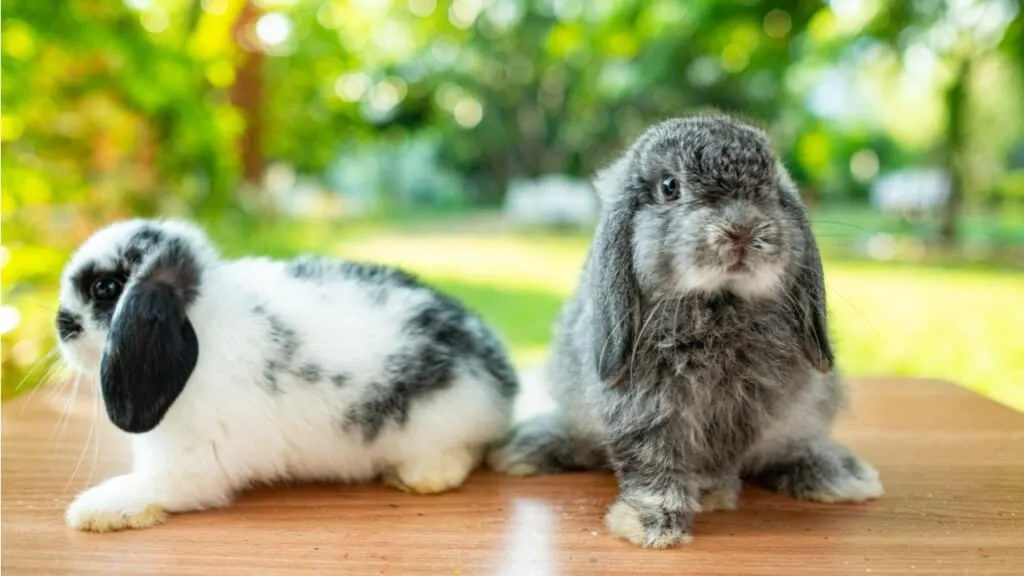
The size of the two breeds, therefore, necessitates varying housing needs. The Mini Lops, being the larger breed, need a little more space in their housing.
They need their hutches or cages to have enough space for them to stretch, move about, and play without feeling cramped.
Indoor housing is usually sufficient for both breeds for the sake of temperature regulation and to reduce contact with predators or other external threats.
Holland Lops are smaller, so they can manage with less room and are adaptable to apartment or small-home living. They still need daily exercise and time outside the cage in a secure, bunny-proofed area.
With any breed, some type of enrichment with toys, tunnels, and playtime needs to be incorporated to avoid boredom and behavioural problems.
They are both litter box trainable and are essentially clean animals, and therefore okay to free-roam in safe indoor areas. They require proper flooring so as not to get sore hocks, and their cages must be regularly cleaned to keep their home clean.
Grooming and General Care Comparison
Mini Lops and Holland Lops also share the same grooming requirements. Both of them possess medium-length, dense coats that should be brushed regularly to remove loose hair and also to avoid matting, particularly during the moult cycle.
They should be groomed once weekly, but you need to brush more often during the periods of hard moult.
Mini Lops will take a bit longer to groom because of their larger body size and thicker coat. They also shed more extensively than Holland Lops. Both should have their nails clipped, ears inspected, and teeth checked.
Lopped ears tend to trap dirt and moisture, so regular inspection and cleaning of these is required to ensure infection is avoided.
Rabbit dental health is an issue that concerns all rabbit breeds. Mini Lops and Holland Lops both have teeth that need to be worn down by a high-fibre diet consisting mainly of hay. Chew toys and vet visits maintain healthy teeth and discourage overgrowth.
Dietary Needs and Health Issues
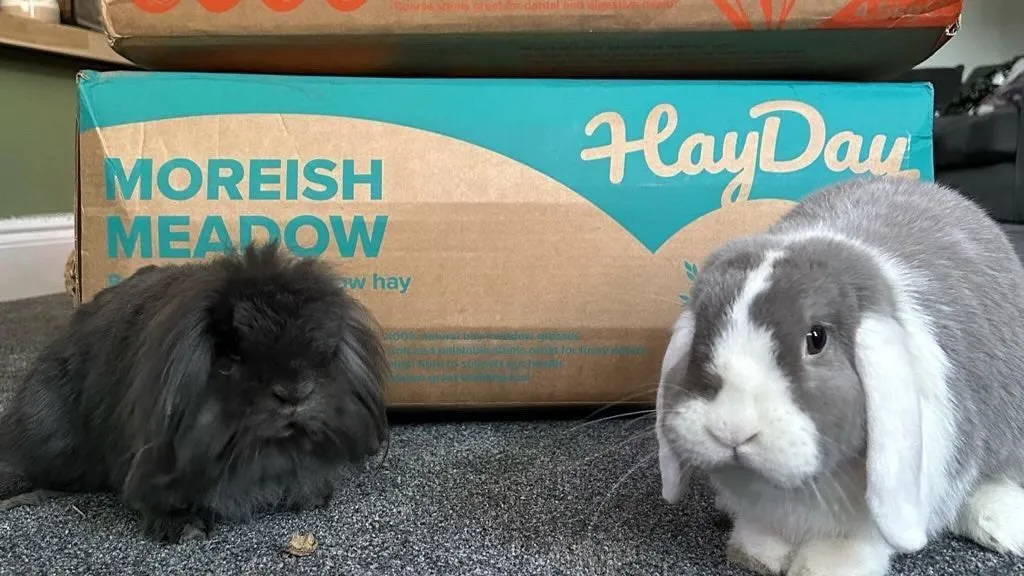
Both have virtually the same dietary needs. The bulk of the diet should consist of hay, supplemented with fresh water, greens, and a small amount of good-quality rabbit pellets. Hay aids digestion and teeth health, and vegetables supply nutrients.
Obesity is a possibility in Mini Lops as they possess a sedentary attitude. Their weight management depends most significantly on exercise and portion control. Holland Lops, being active, are not prone to obesity but do need diet control.
The common health issues of both breeds are gastrointestinal stasis, ear infection, and dental disease. Sore hocks are also found in both breeds if they are kept on wire floors or in dirty environments.
All these can be easily treated or prevented with regular health screening, grooming, and proper feeding.
Training and Behavioural Enrichment
Mini Lops and Holland Lops are intelligent and can learn basic commands, litter box training, and tricks. Positive training with minimal reward and timetables is the best way of training these rabbits.
Mini Lops will likely be simpler to train as they are more relaxed and therefore more willing to be handled and trained. Holland Lops, however, with their high-strung and energetic personalities, will require guile and greater patience to keep them from becoming bored.
But both these breeds, once trained, can exhibit a great degree of responsiveness and loyalty.
Enrichment helps to prevent behaviour disorders. Dig boxes, toys, and the rotation of the environment keep them stimulated. Both breeds are attention-seeking and will destroy property or get bored if left alone for long periods of time.
One-on-one time with your rabbit daily is paramount in developing a close, healthy relationship.
Longevity and Lifespan Comparison
In the area of lifespan, Holland Lops and Mini Lops give ample companion time. They both average between seven and ten years, but they have lived longer in excellent conditions.
They offer longevity by making regular vet visits, proper diet, good surroundings, and plenty of attention and affection. Animal Breed Guide.
Spaying or neutering both kinds of rabbits is highly recommended. Not only will it avoid unwanted breeding, but it will also reduce one out of six risks of certain cancers as well as make them more even-tempered.
Spayed or neutered rabbits are less fearful, more affectionate, and easier to litter train.
Which Breed Is Right for You
It boils down to your lifestyle and choice between Mini Lop and Holland Lop. If you have the room and want a more relaxed, larger rabbit that adores cuddling and quiet companionship, the Mini Lop will be a great one.
It is ideal for families who are better placed to offer space and quiet sections where the rabbit will feel comfortable.
On the other hand, if you’re looking for a smaller, more active bunny that enjoys exploration and play, the Holland Lop is ideal. It fits well in smaller homes and can be a joyful companion for individuals who enjoy interacting regularly with their pet.
Regardless of the breed you choose, Holland Lops and Mini Lops are smart, loving, and will bond very well with owners.
Understanding how they are different and alike will allow you to make the best decision for the most rewarding and fulfilling bunny ownership experience.
Final Thought
Both the Mini Lop and the Holland Lop rabbit make great pets, each with their unique personality and appeal to add to a happy home.
Their cute looks, friendly temperament, and fun interactive nature make them popular top choices for home rabbit breeds. Although their needs are very comparable, minor differences in size, temperament, and grooming could make one better suited than the other for your situation.
Either one you select, the loving but robust Mini Lop or the tiny but energetic Holland Lop, your new bunny pet will introduce play, companionship, and affection into your life.
Take a bit of time to learn what they need, be sure to be consistent, and enjoy the benefits of that special bond that can be found in a bunny and a bunny alone.

